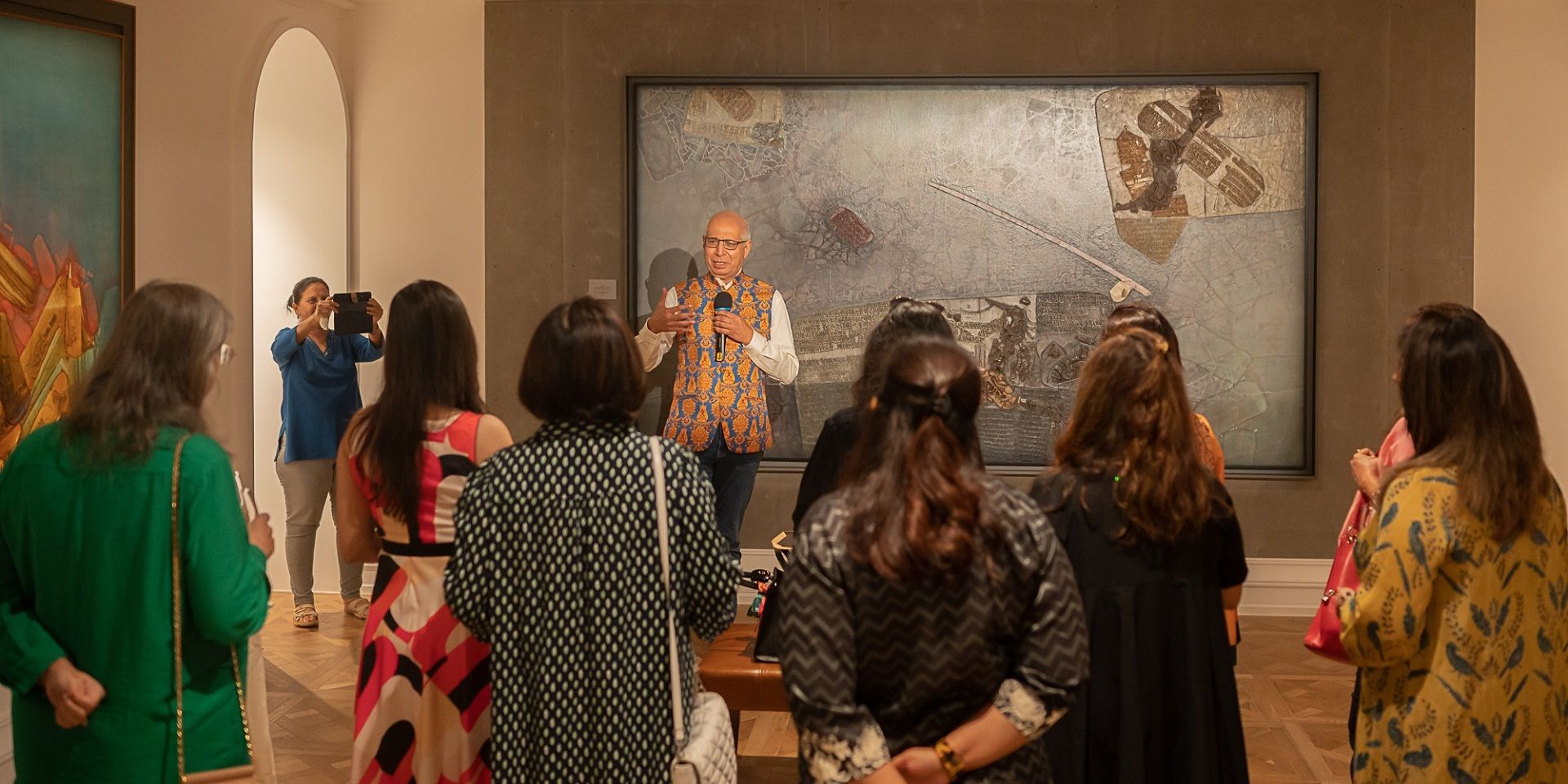Cities on Canvas: Exploring Avinash Chandra's Shimla
Cities on Canvas: Exploring Avinash Chandra's Shimla
Cities on Canvas: Exploring Avinash Chandra's Shimla
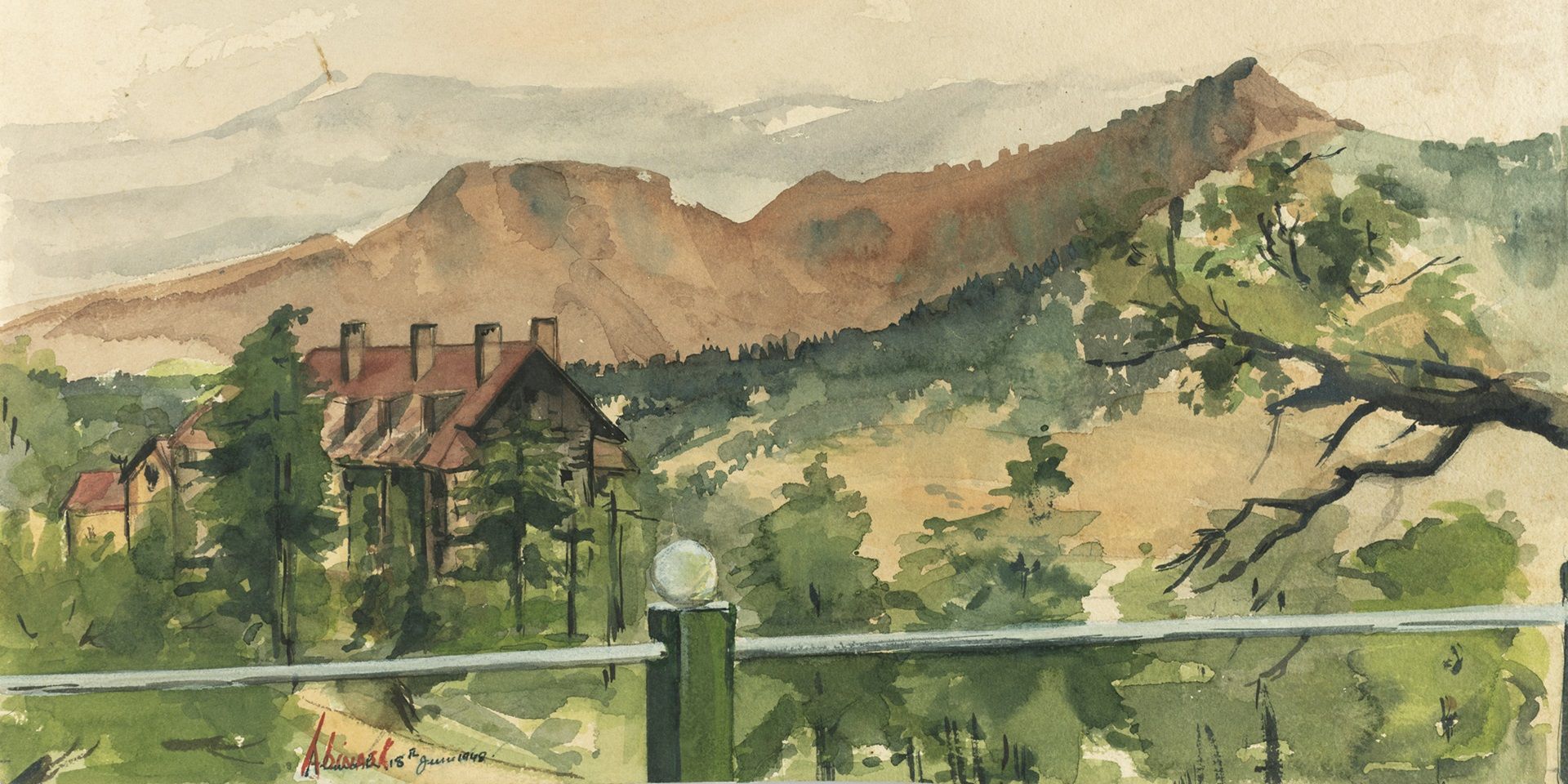
Avinash Chandra, Ridge, Shimla (detail), 1948, Watercolour on handmade paper, Collection: DAG
The peaks in the distance remain veiled in mist, almost as a reminder of the impending monsoons, marking the end of a lush summer.
The verso of this watercolour tells us that this was painted ‘From the Ridge (Simla)’, 18th June 1948. Shimla in June would have been bustling with vacationers, escaping the unsparing heat of the plains, and yet, Avinash Chandra’s rendition of the view offers a deceptive stillness. The artist’s signature dots the bottom left corner in red, just under the railing he would have stood behind, amidst the bustling human presence dotting the Ridge. He paints the view from inside out—standing at the heart of the city looking out to its horizons. We stroll through, pause, and explore the summer capital of colonial India (since 1864) through the landscape paintings and watercolours of Avinash Chandra in this recurring series, Cities on Canvas, where we journey through cities that have found a home on artists’ canvases.

|
Avinash Chandra, Hotel Cecil, Ink on paper 11.0 x 15.0 in. Collection: DAG |
Avinash Chandra was born in Shimla in 1931 and raised across the capital city and the summer capital of the country. His father was a manager at the Cecil Hotel and worked across the Delhi and Shimla branches, which allowed Chandra access to a view of the city afforded to affluent tourists, visitors and the yearly crowd who would come to summer in the hills. Although born the year Shimla stopped holding the official mantle of the summer capital of colonial India, Chandra would have spent his childhood in a city that was still bustling with activity.
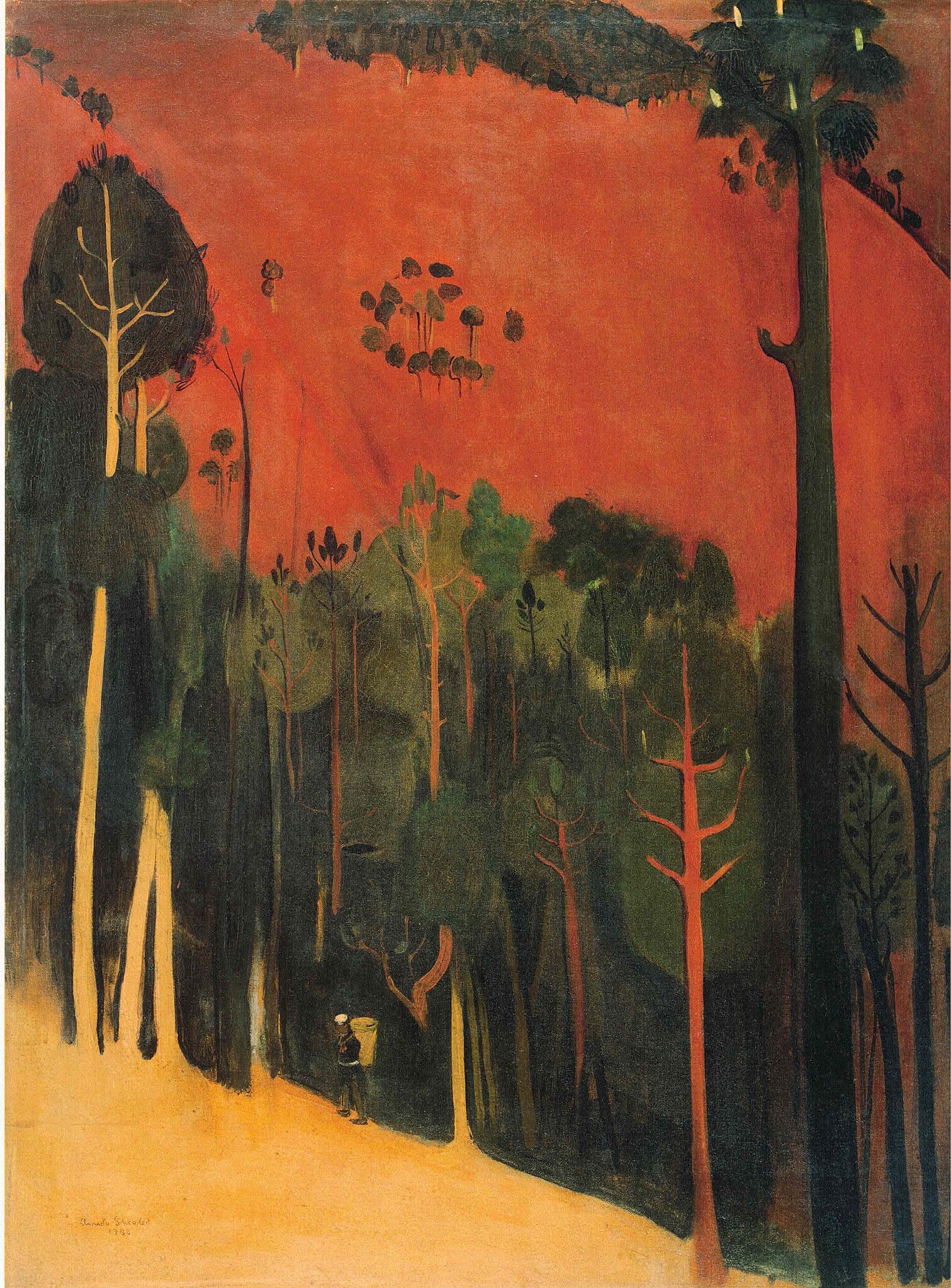
|
Amrita Sher-gil, Hillside, Simla, 1938. Image courtesy: Wikimedia Commons |
The Cecil Hotel where Chandra’s father worked would have been at the heart of the social life of the city. It appears peeking from within a thick canopy of trees in a painting he made in 1956, the year he left for London. Valerie Murray-Chandra recalls his memory of being given a box of crayons by one of the guests at the Cecil when he was very young. His excited experimentation with these crayons led to colourfully decorated paper menus in the dining room hotels. These childhood experiments were probably right at home within the halls of the Cecil, as it is here that Barada Ukil, in 1936, organised a large and ambitious exhibition of paintings by Jamini Roy, Abanindranath Tagore, Gaganendranath Tagore, D. P. Roy Choudhury and others. Eleven of these paintings were by Amrita Sher-Gil, whom he met at the annual exhibition of the Simla Fine Arts Society soon after she had returned to her family home in the city.
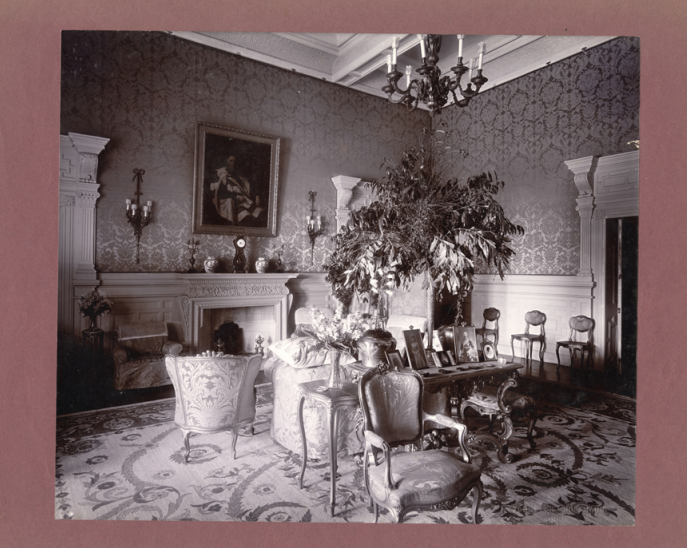
Johnston and Hoffmann, Drawing room of Viceregal Lodge, Shimla, c. 1890s, Silver gelatin print on paper pasted on paper 9.2 x 11.2 in. Collection: DAG
The seven thousand feet high Ridge upon which Chandra stood as he surveyed this expanse, is to this day the social hub of the city, brimming with pedestrians at all times. The cacophony of tourists promenading, children running about, shoppers headed to and emerging from Lakkar Bazaar, crowds one’s memory while walking the Ridge on a pleasant summer afternoon over half a century later. Chandra, who became most well-known for his landscapes featuring human forms, here chooses to present a view almost austerely non-anthropic, of possibly a similar June afternoon. Even a few years before he would paint this scene, in 1943 as Ruskin Bond recalls, one could take a short walk from here across to Mall Road and be met with hordes of families on holiday, men in uniforms of various services and even the liveried staff of the Viceregal Lodge; and despite the sugar rationing, an overflowing clientele at Davico’s lining up for sweet treats and curry puffs. A hubbub better reflected in this view of the Shimla Bus Stand, sketched only a couple of summers later.
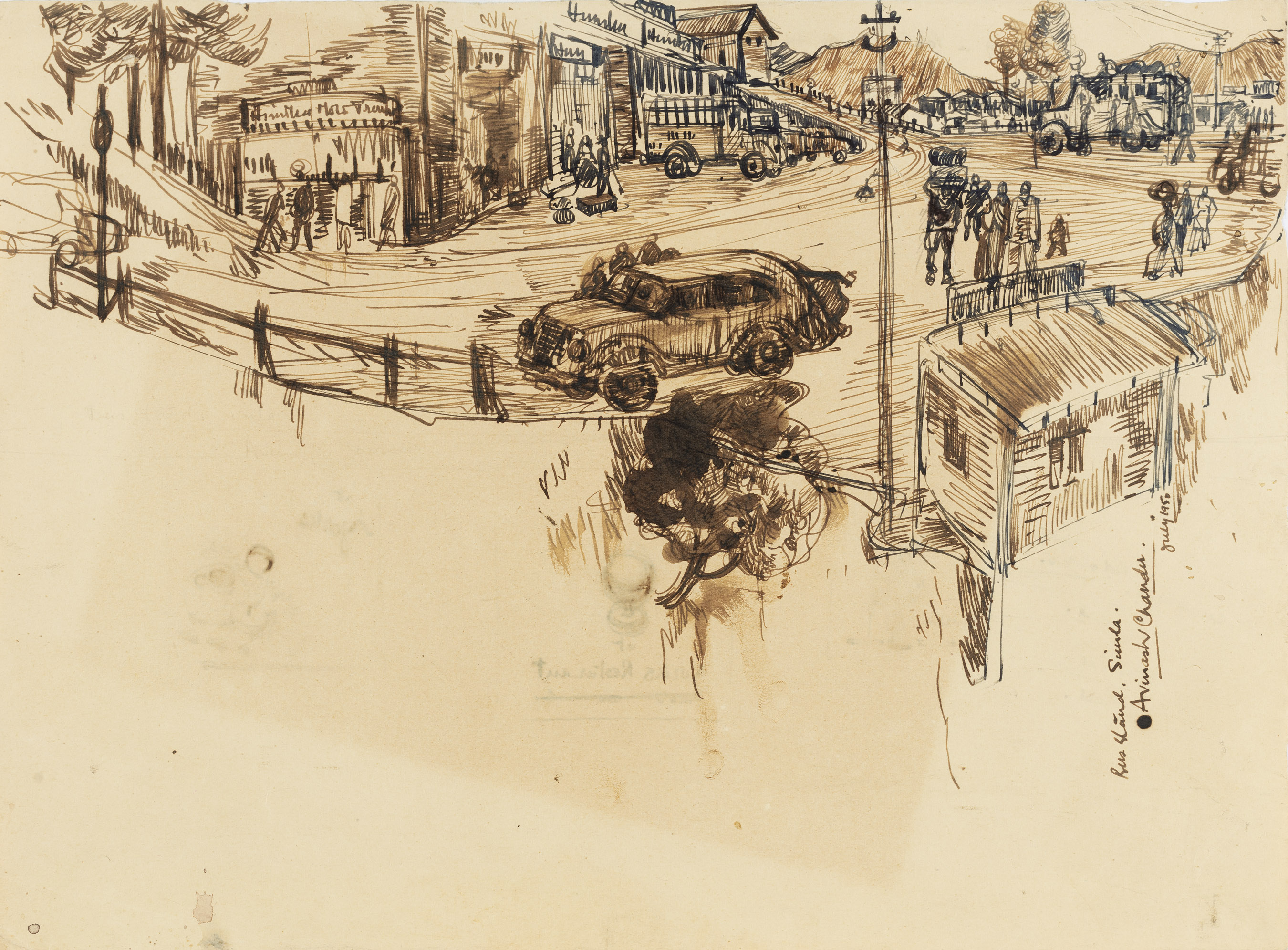
Avinash Chandra, Bus Stand, Shimla, July 1950, Ink on paper, Collection: DAG
Despite being starkly different from the watercolour view of the Ridge, what remains common are the peeking ranges of the Shivaliks in the distance that loom over the city. The disproportionate usage of space on the paper creates a warped perspective almost reminiscent of a viewfinder which wraps the panorama to accommodate it within the limited sightlines of the human eye. This distortion introduces a sense of distance from the scene, yet the careful placement of hatchings along the road conjures a sense of movement. As the eye wanders through the winding streets, it's hard not to imagine the everyday hum of life—travellers, porters, and the rattle of passing vehicles. Within the body of Chandra’s early work, this drawing marks a departure from the Shimla he typically portrayed: not the lush, sunlit idyll of green slopes and unyielding mountains, but a grittier, more dynamic interpretation of the city.
These images allow us glimpses of many intermittent returns to Shimla for Avinash Chandra, who had enrolled at the Delhi Polytechnic in 1947. His picturesque watercolours of Shimla belie the strife and struggle that marked the city in the past couple of years. In 1945, to the West of the Ridge, within the halls of the Viceregal Lodge, Lord Wavell hosted the historic Simla Conference attended by leaders discussing the future of an independent India; ending with, what many have called, the loss of any hope for an undivided India. The ramifications of the disappointing resolution of the conference was felt soon after. Less than a kilometre from where Chandra had stood drawing the buzz of the bus stop, communal violence wreaked havoc on Lower Bazaar. Ruskin Bond recalls the road to independence involving erratic eruptions of violence throughout the city, and the very roads that Chandra draws, carried buses full of Muslim children being sent away from the prestigious boarding schools the city boasted of.

|
Sobha Singh, When the Goal was in Sight, 1945, Offset print on paper, 13.0 x 18.7 in. Collection: DAG |

|
Avinash Chandra, Untitled, Watercolour on handmade paper, Collection: DAG |
These early watercolours, painted during his student years reflect an intimate familiarity with the landscape which finds formal expression in the keen precision of light and shadow and a playful approach to levels and layers. He uses swathes of colour on a wet surface to create the flat washes of the trees and the rolling hills and then uses a darker shade on a drier brush to dot them, allowing for the darker pigment to bloom over the lighter wash, creating depth. In some places, he uses different darker shades to go over the dried surface to create shadows and dappled light—a skill that is compelling enough to make us imagine the slanting rays of the sun warming the skin on a cool late summer afternoon. This intimate connection with Shimla is also evidenced by how often these views featured in his paintings, especially in his early years as an artist in Delhi. In a catalogue that was published in 1953 by the Delhi Silpi Chakra for an exhibition of his paintings, we see a couple of paintings directly referencing the city while many others reference its landscapes formally.
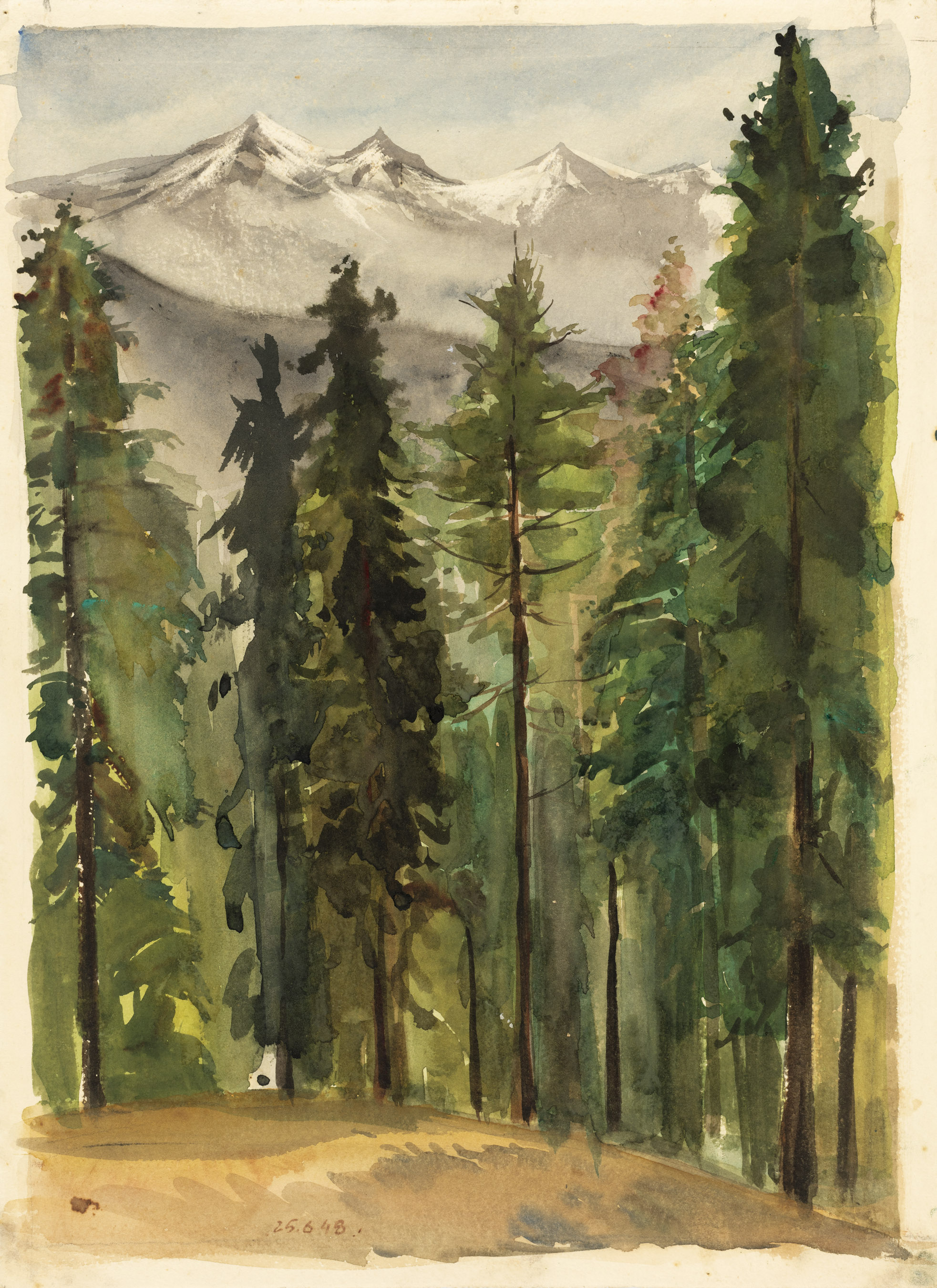
|
Avinash Chandra, Narkanda, Three Peaks, 1948, Watercolour on handmade paper, 15.2 X 11.2 in. Collection: DAG |
Most of these paintings of Shimla, however, give us a very different view of the city. During this period, he was producing landscapes in a style that played with elements of expressionism—thick lines, intense colours, and rough rapid brushstrokes came together to form charged views of terrains he knew intimately. Even after he moved to London in 1956, Shimla and Srinagar (which he visited as a student) would travel through his canvases alongside views of London and Belfast. Eventually, he moved on to the ‘humanscapes’ he is most remembered for—landscapes populated by lively intermingling of limbs in a vital medley of colours.

Avinash Chandra, Shimla, 1989, Watercolour on paper, Collection: DAG
We return to Chandra’s Shimla one last time, with this watercolour painted only a couple of years before he passed away. This panoramic view, which appears unfinished, is reminiscent of Chinese or Japanese landscape scrolls in the way that it unfolds and is composed. As we journey along the loops and winding ways across the valley, we return to the familiar watercolour swatches of soft browns and pale greens, but this time we are also greeted by pops of fiery red, warm oranges and ochres. The Shivaliks remain, unchanging, like silent sentinels, as they stand guard between the city and the world beyond. The clusters of houses, jaggedly placed almost like a jigsaw, dot the undulating surface with terraced hills extending beneath them. The famous Kalka to Shimla toy train snakes its way through the coiling and unfurling lengths of land. This is a Shimla that holds imprints of memories softly fading—a childhood spent in the vibrant cultural heart of the city, an adolescence dedicated to the capturing of the light on the endless green surrounding the city, and a mature return to the vital possibilities within the landscape.
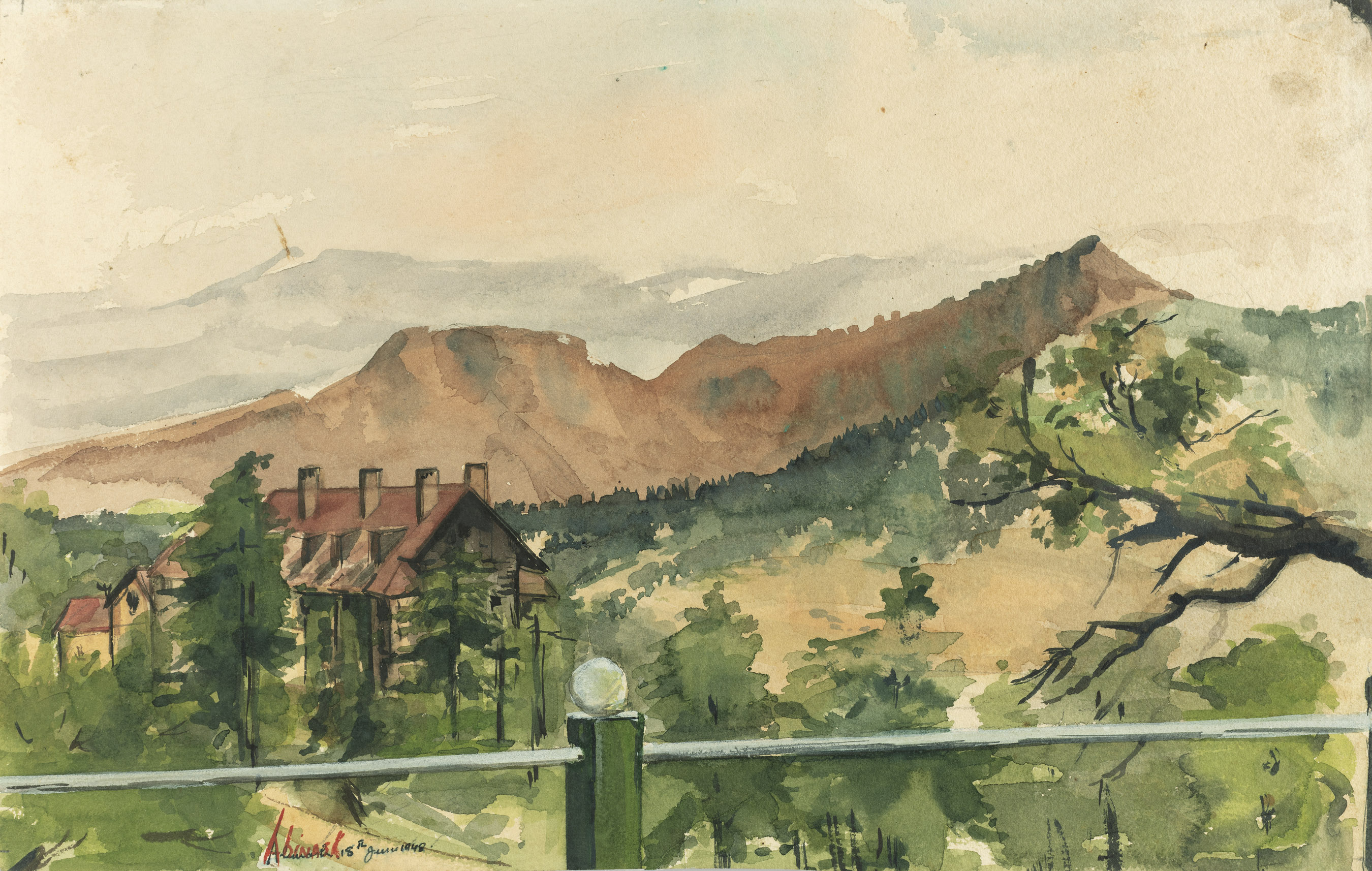
Avinash Chandra, Ridge, Shimla, 1948, Watercolour on handmade paper, Collection: DAG



